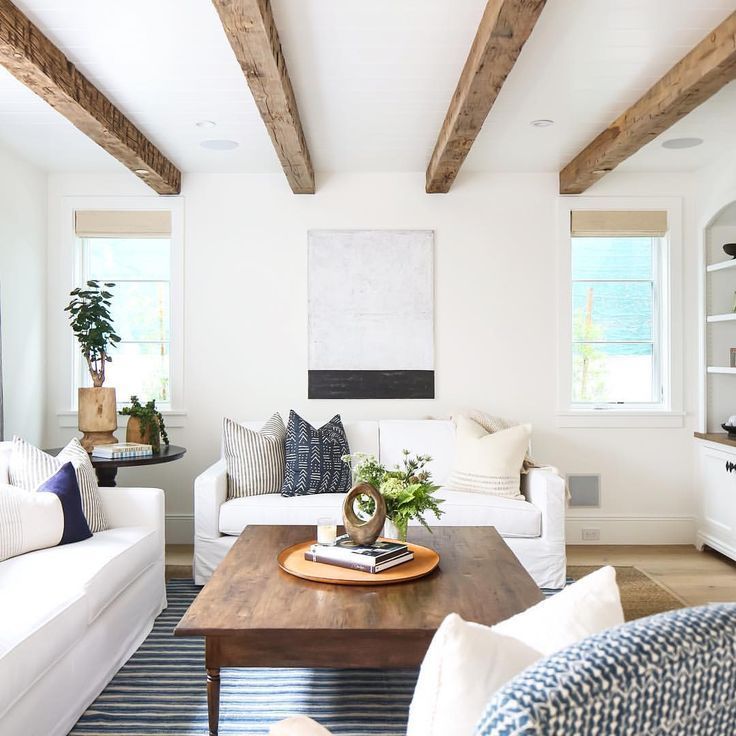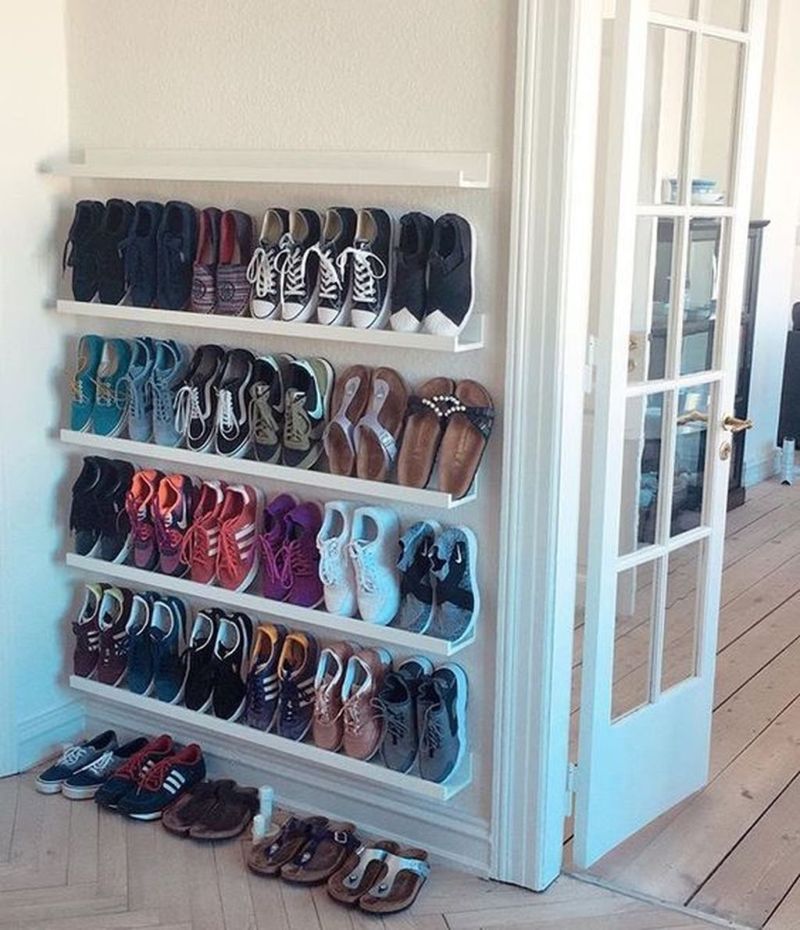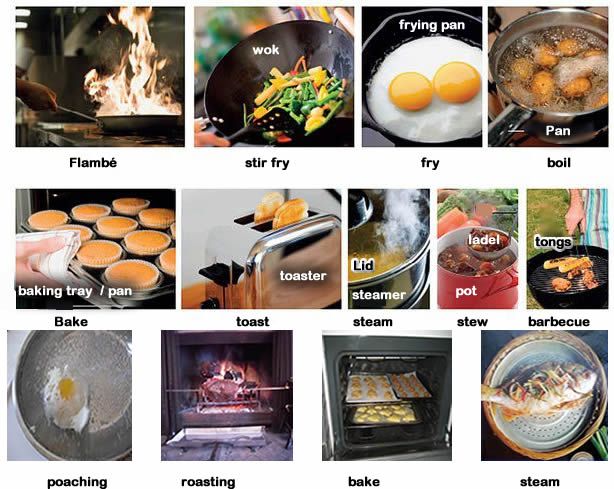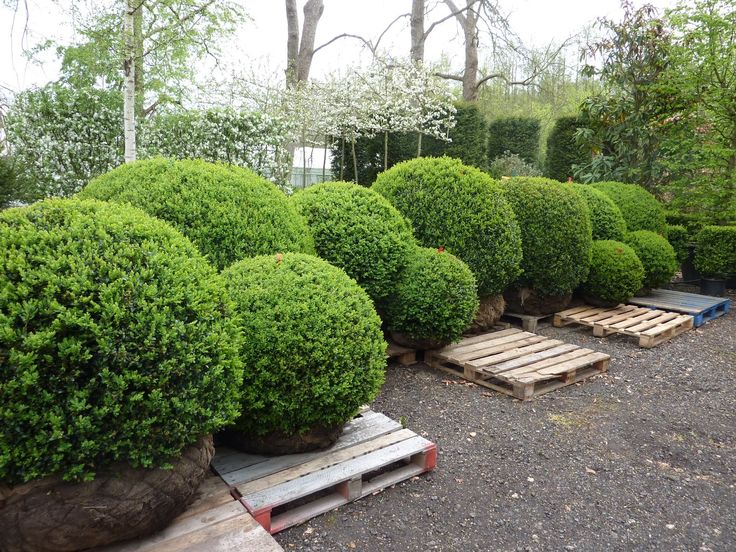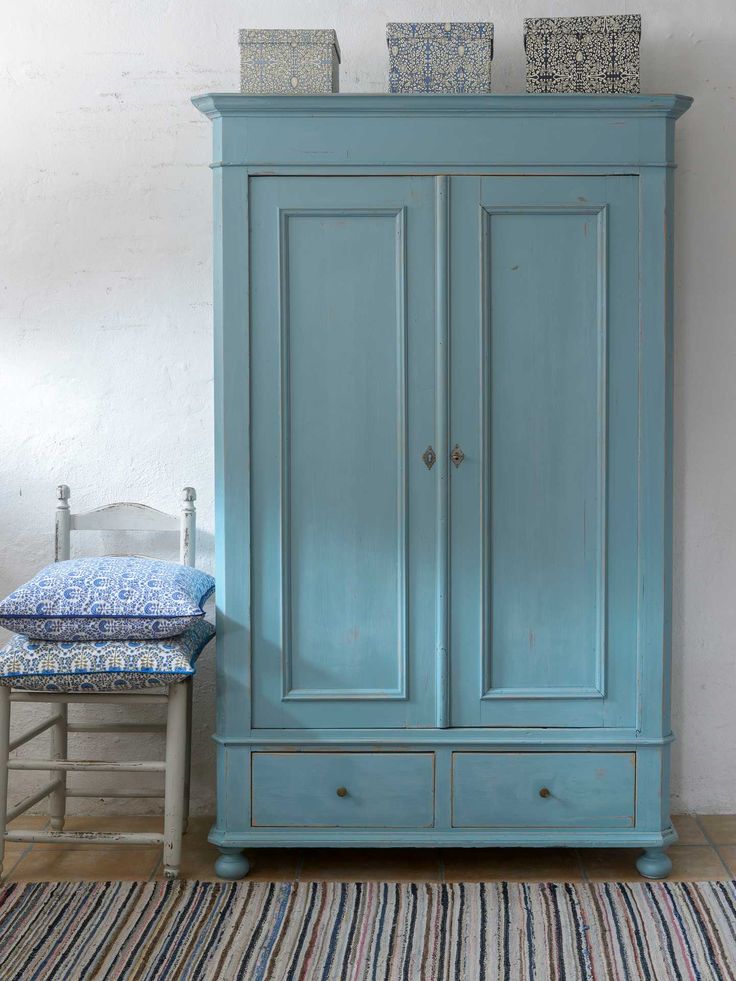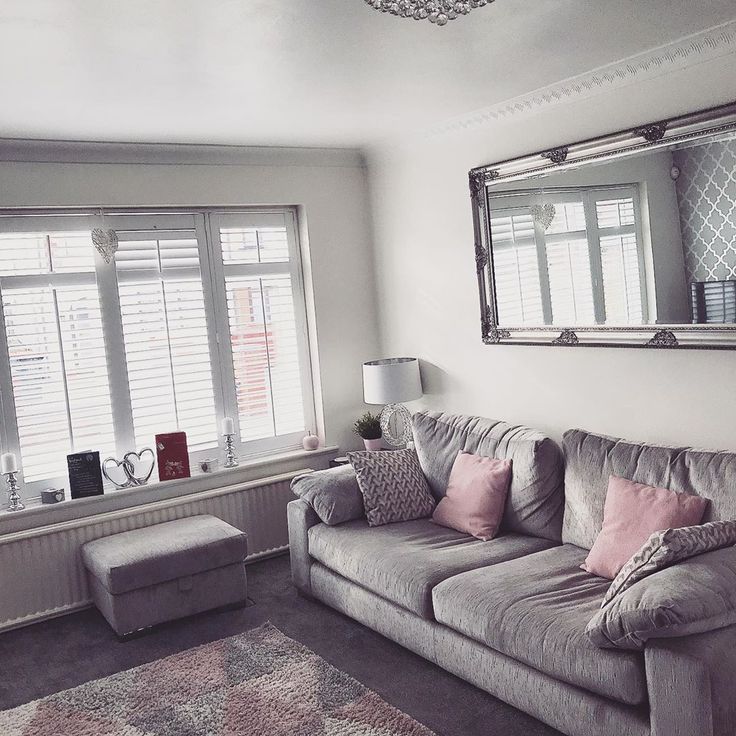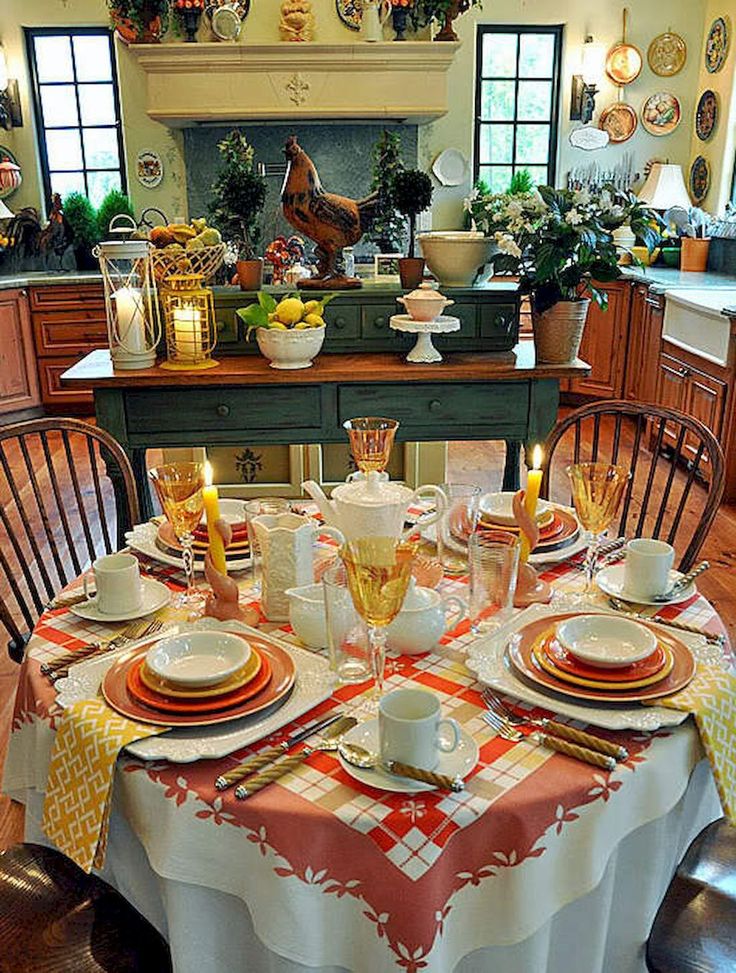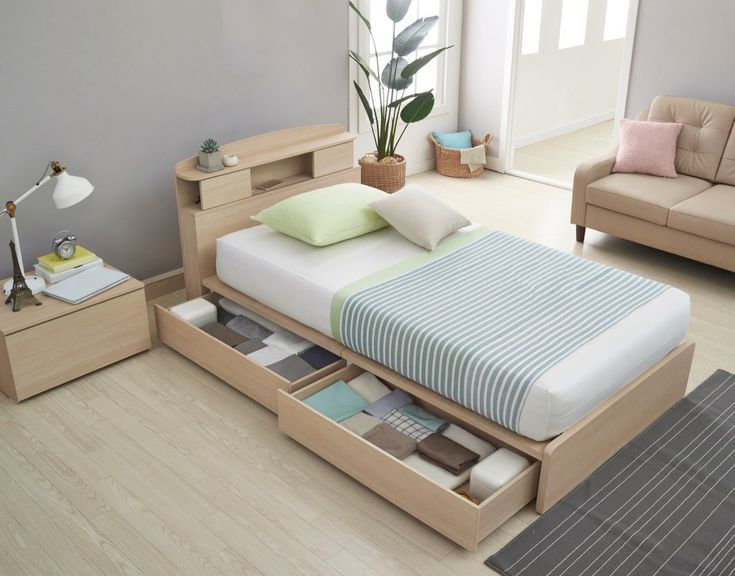Kitchen cabinet staining
How to stain kitchen cabinets: an expert guide |
When you purchase through links on our site, we may earn an affiliate commission. Here’s how it works.
(Image credit: Alamy)
Staining kitchen cabinets is one of the easiest and most cost-effective ways to transform wooden cabinetry from tired and drab and in need of some TLC, to good as new.
Perfect for traditional designs, wood stain can be used to create various color tones, as the stain soaks into the wood, allowing the natural knots and grains to show through. ‘Staining kitchen cabinets shows off both color and texture,’ says Lucy Searle, Global Editor in Chief of Homes & Gardens. ‘It’s a great way to refresh old or dated furniture and can add warmth and character to the kitchen. It also makes it easier to touch up in the coming years if any marks or blemishes appear.’
The process is pretty simple, similar to how you paint kitchen cabinets, and the key lies in the preparation. Ryan McDonough, interior design expert at My Job Quote says that you can use a wood repair filler in a natural tone to disguise any cracks or nicks in the surface and use a furniture touch-up pen to even out any areas where the old stain has worn away. ‘You can now apply a new coat of stain,’ he says. ‘Always pick wood stain for interior use to avoid harsh chemicals inside the home and follow the application advice on the tin. Finishing with a wax will help provide a protective coat to your cabinets.’
Below we take you through the process of staining kitchen cabinets step-by-step.
How to stain kitchen cabinets
Staining is a great way to refresh the space without having to remove kitchen cabinets and install kitchen cabinets with a different look.
Not only does a wood stain enhance the look of wood kitchen cabinet ideas in the same way that refinishing kitchen cabinets can, but it also protects them so your kitchen will look better for longer.
Michael Rolland, interiors expert and MD at The Paint Shed , shares his step by step guide on how to update kitchen cabinets without replacing them when they’re made from real wood.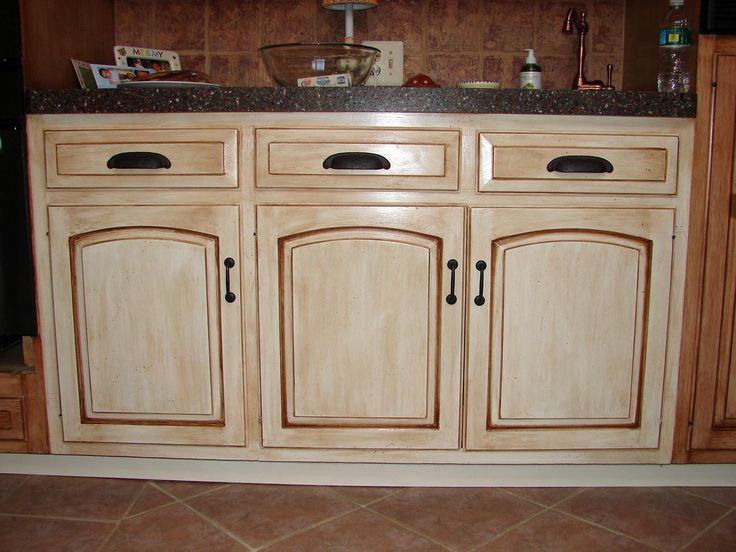
You will need:
- TSP (Trisodium Phosphate)
- Microfiber cloths
- Drop cloths
- Protective plastic gloves
- Chemical paint stripper (depending on cabinet condition)
- Paint scraper
- Palm sander (optional)
- Fine-grit sandpaper
- Medium-grit sandpaper
- Wood treatment
- Long-haired, soft bristle paint brush
- Steel wool
- Wood stain
1. Clean and protect
Start the process by removing the cabinet hardware, including the handles and knobs. Put these aside in a bag to ensure you don’t lose any of the screws. Unless you are replacing them, in which case you can donate or sell the originals.
The next step is to thoroughly clean the cabinets. As the kitchen is a place where there is a lot of grease, it is vital that you use something a little stronger than just water to clean the cabinets. TSP (Trisodium Phosphate) is often recommended for jobs like these. It can come as a ready-made spray or as a powder to be mixed with warm water.
It is important that if you are using TSP for cleaning, you are properly protected with gloves and goggles. Once the TSP has properly dried, there will likely be a white residue. Remove this with a clean damp cloth and wait for it to dry.
It is important to note that unless your cabinets are raw wood, the existing finish must be removed. Whether this is paint or a different stain, it should be stripped using a paint and varnish stripper before applying the new stain.
Next, protect your surroundings. Be sure to remove any appliances on the countertop and lay down dust sheets to protect your floor.
If you haven’t got the steadiest hand then use painter’s tape to protect the places where the cabinets meet the countertop and walls.
2. Prep and sand
Once the cabinets are clean and dry, move on to sanding the cabinets with 80 to 120-grit sandpaper. If you have access to a palm sander, this will make the process quicker and easier, but it is not essential.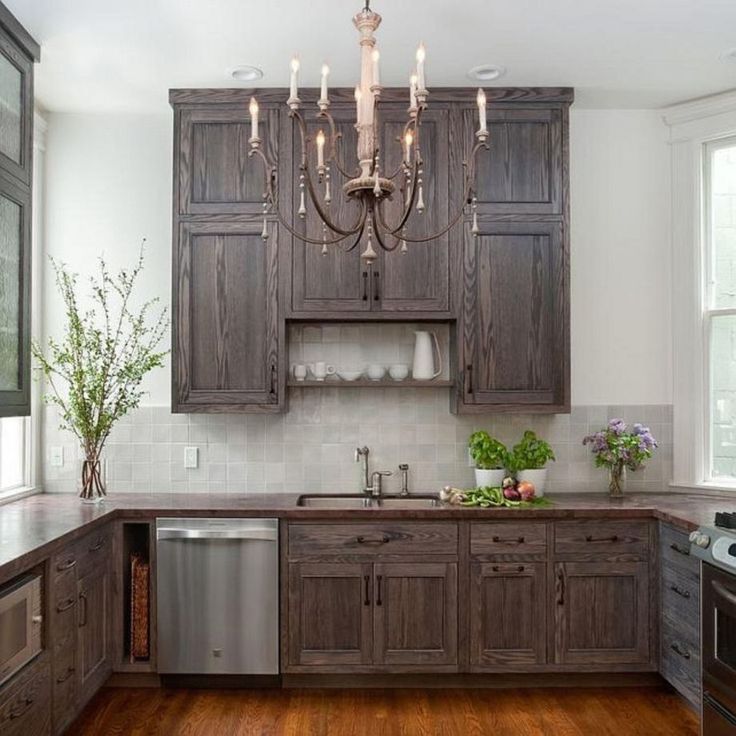
Sand in the direction of the wood grain until the cabinets' surfaces are smooth and even. If you notice any imperfections in the wood, such as deep scratches or dents, you can use a wood filler to fix them then sand until smooth when dry.
Sand the cabinets again but this time with 150 to 220-grit paper. Use a vacuum cleaner to clear the sanding dust and wipe the excess dust from the cabinets then leave to dry.
3. Treat the wood
Once dry it is recommended that the wood is treated prior to staining. As the kitchen is a high traffic area that is exposed to a lot of moisture and grease, it is important that in the interest of longevity, the wood is treated. Wood treatments can be applied using a brush or a cloth. Check the manufacturer’s recommendations for the number of coats required and drying times.
4. Stain the wood
The stain should be applied in a full flowing coat, ensuring all surfaces and end grains are fully coated. For best results use a good quality, long-haired, soft bristle brush.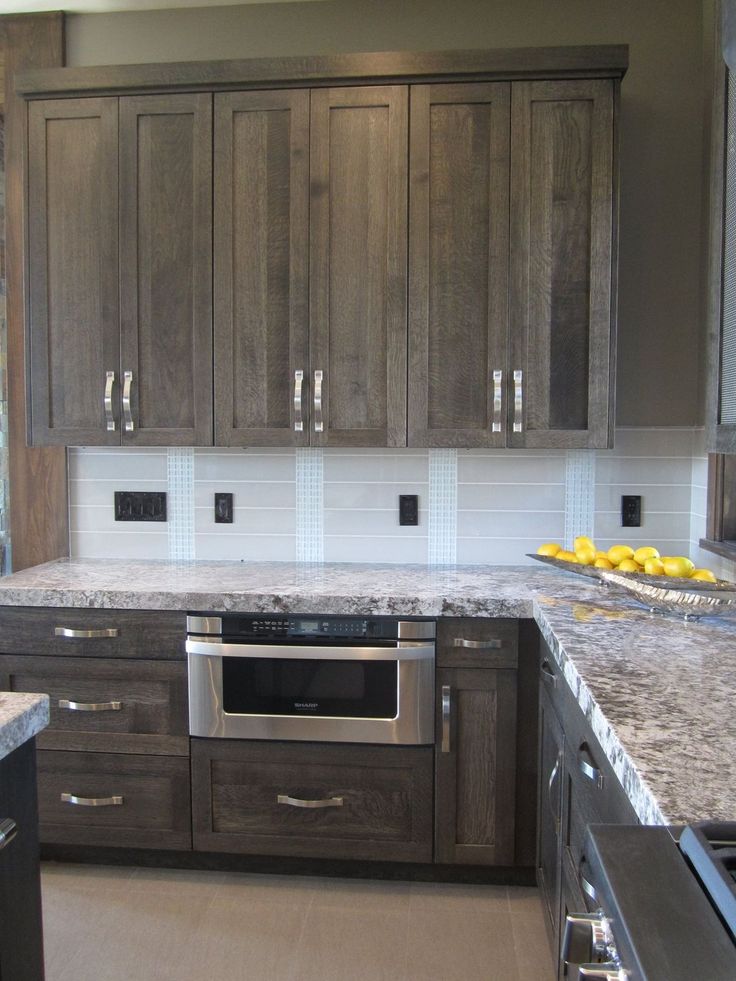 Avoid over brushing as this will cause brush marks and result in a poor quality finish.
Avoid over brushing as this will cause brush marks and result in a poor quality finish.
Be sure to work in the direction of the grain and aim for a light, even coating. If you do notice sections looking darker than the rest, you can lighten this by rubbing off the excess stain with a fresh rag or cloth.
Allow the first coat to dry, which takes 2-4 hours, before applying a second coat. It is also recommended that you lightly scuff the cabinet surfaces with steel wool after the first coat before applying the second.
Many stains will have a sealer built into the product, meaning that no topcoat is needed. However, make sure you check the stain before calling it a day.
Can you stain over existing kitchen cabinets?
Yes, you can stain over existing kitchen cabinets, though you will need to remove all traces of the existing finish first to get the best and most professional result.
Is it difficult to stain kitchen cabinets?
It is not hard to stain kitchen cabinets – most DIYers can tackle the job perfectly well.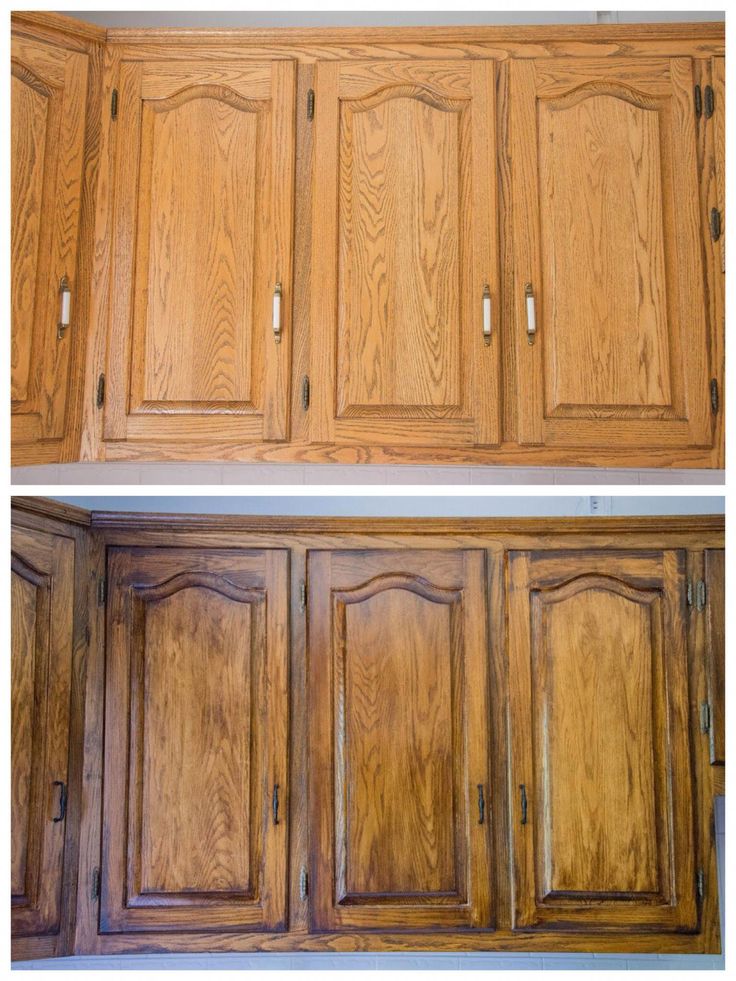 The keys to success are: good and thorough preparation; the right wood stain and brush for application; ensuring a top coat is applied if needed. If you aren't confident of staining wood kitchen cabinets in place, removing doors and drawer fronts to stain them flat can give you better results.
The keys to success are: good and thorough preparation; the right wood stain and brush for application; ensuring a top coat is applied if needed. If you aren't confident of staining wood kitchen cabinets in place, removing doors and drawer fronts to stain them flat can give you better results.
Is staining kitchen cabinets a good idea?
Yes, if you want a really hardwearing finish. Staining kitchen cabinets allows you to easily touch up over time, as any marks or scuffs can quickly and effortlessly be covered up.
What is the best stain for kitchen cabinets?
The best stains for kitchen cabinets are water-based but always ensure that your wood stain matches your wood finish for best results.
Hayley is an interiors journalist, content provider and copywriter with 26 years experience who has contributed to a wide range of consumer magazines, trade titles, newspapers, blogs and online content. Specialising in kitchens and bathrooms, she has twice won the CEDIA Award for Best Technology feature. Hayley writes for H&G about kitchens, bathrooms, cleaning, DIY and organizing.
Hayley writes for H&G about kitchens, bathrooms, cleaning, DIY and organizing.
How to Stain Wood Cabinets
What can we help you find?
Search
Search
If your budget doesn’t have room for new cabinets, don’t worry. You can give your wood cabinets a quick makeover with a fresh coat of stain. Using a different color stain—even as simple as going one shade darker or lighter—can give your kitchen, bathroom or other rooms in your home the new, updated look you want.
Step 1: Choose a Stain
Decide on a stain finish. Before starting, you need to have an idea of what you want your finished cabinets to look like. The color or shade of stain you use affects how a room feels, especially the kitchen. To open up a room and make it feel larger, opt for a light stain. To add warmth to a larger kitchen or room and make it seem cozier, choose a darker stain. Also, keep in mind the type of wood from which your cabinets are made.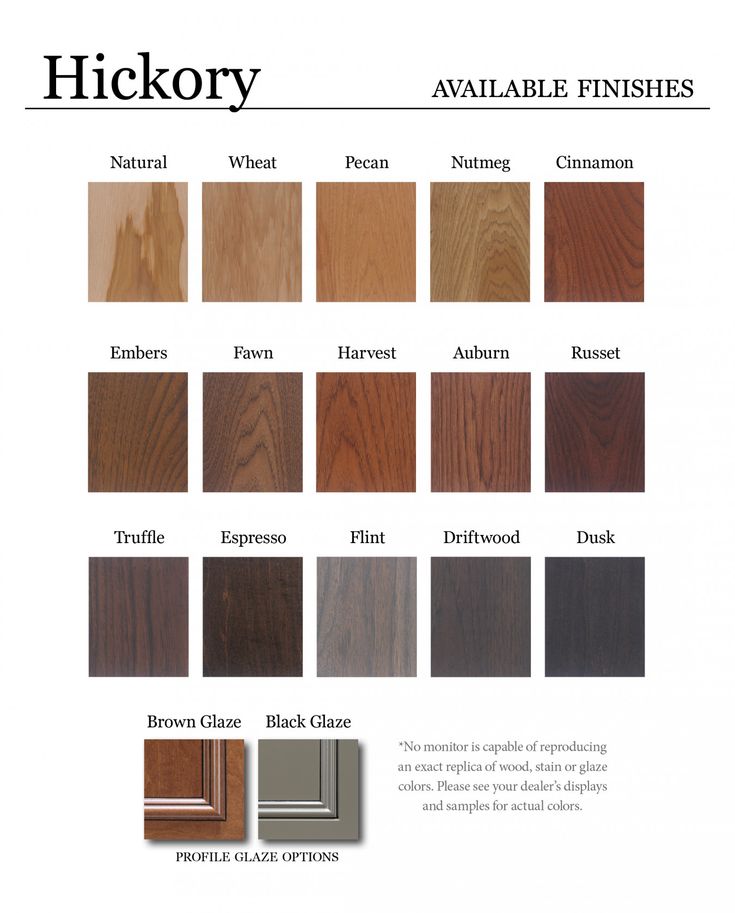 You want the stain color you are going for to complement the wood. Some stains work better with a particular wood more so than others. You must take into consideration the natural color of the wood and the size of the wood’s pores. For example, woods such as rosewood, cherry and mahogany are types that are rarely stained because of their natural appearance. They are usually just protected with a clear coat. Woods such as maple are less porous than others and so are harder to stain. For help deciding, get advice from an associate at your local True Value hardware store.
You want the stain color you are going for to complement the wood. Some stains work better with a particular wood more so than others. You must take into consideration the natural color of the wood and the size of the wood’s pores. For example, woods such as rosewood, cherry and mahogany are types that are rarely stained because of their natural appearance. They are usually just protected with a clear coat. Woods such as maple are less porous than others and so are harder to stain. For help deciding, get advice from an associate at your local True Value hardware store.
There are several types of stains to choose from. There are oil-based and water-based stains, gel stains and stain/sealer in-one formulas. Oil-based stains penetrate into the wood without raising the grain but carry a strong odor. Instead, you may choose a water-based stain. They’re eco-friendlier and offer easy soap-and-water cleanup. They do often require a light sanding to minimize raising the grain.
Never use deck stain on cabinetry.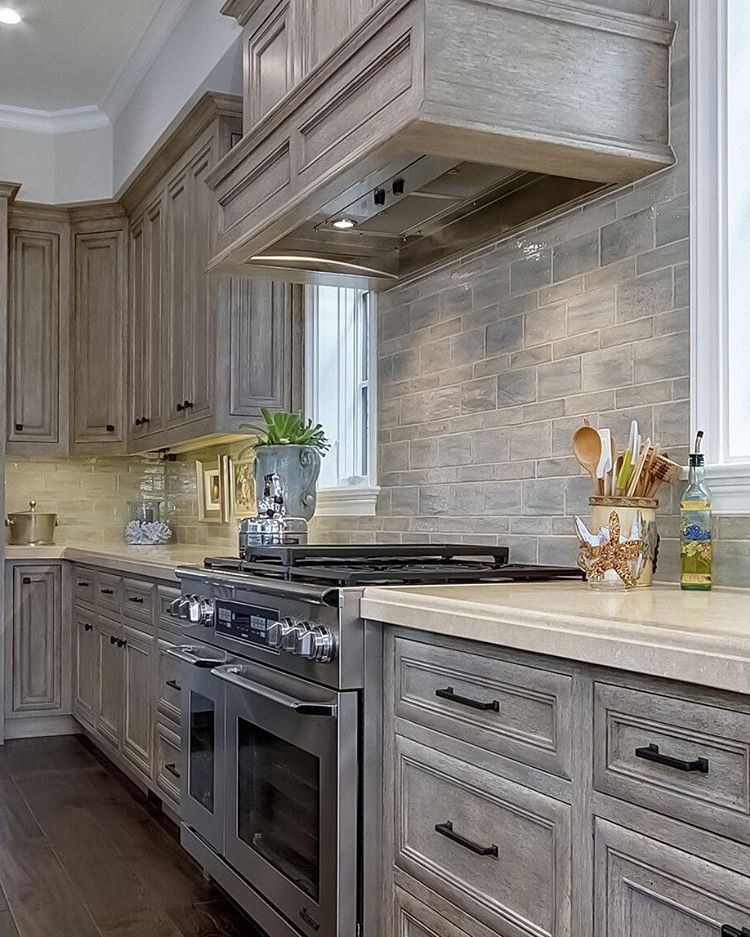
Step 2: Remove Hardware, Doors and Drawers, and Clean Surfaces
Remove cabinet doors and drawers, and their hinges, handles, knobs, closures and other hardware using a screwdriver. If you're going to stain your cabinets with the doors on, you don't have to remove the hinges. Just mask them with painter's tape. Keep in mind, though, that staining the pieces may be easier with them removed.
Be sure to protect floors, countertops and any other surfaces in your kitchen or work area with drop cloths or plenty of newspaper. Also, remember to keep track of the hardware and which door or drawer corresponds with it
Clean the wood with trisodium phosphate (TSP), a heavy-duty cleaning powder. Dilute the TSP with water according to the manufacturer’s specifications. Use a sponge and the TSP solution to wash doors and cabinet exteriors, letting them dry completely.
Use TSP as directed by the manufacturer. TSP can corrode metal and damage finished wood. Be sure to wear protective eyewear and rubber gloves.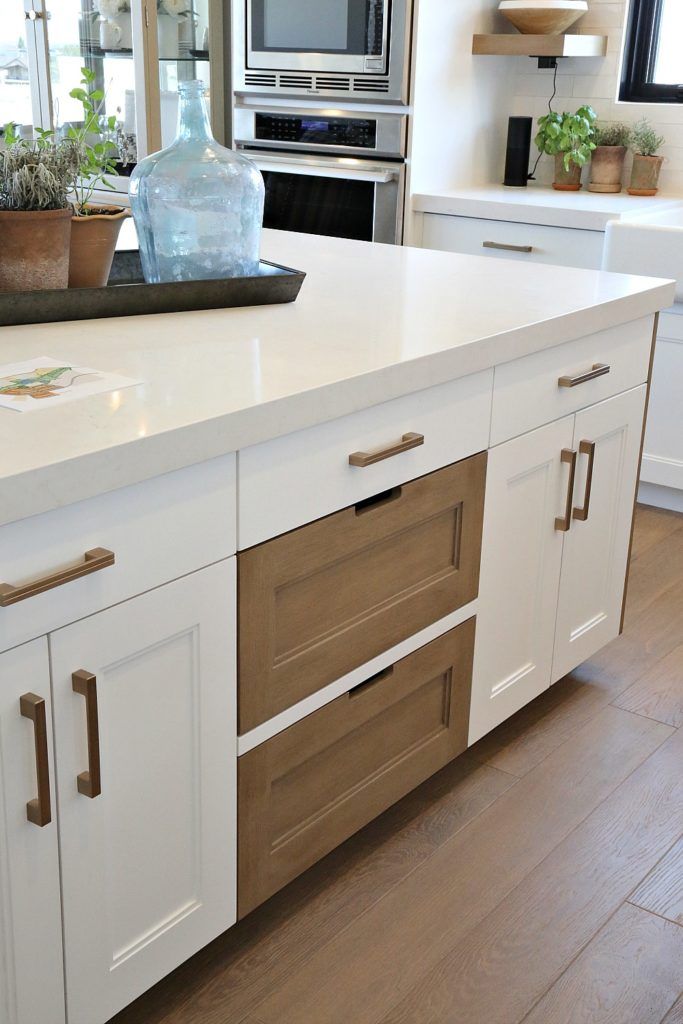
Step 3: Remove Old Finish
Remove the existing finish by sanding. Use a medium/low-grit sandpaper to remove the old finish and to smooth out any imperfections in the wood. Work carefully around any decorative details and curved areas. Always sand with the grain of the wood. Any swirl marks caused by sanding will stand out when you stain.
Using chemical strippers is another and often easier method. Using a medium-sized paintbrush, apply the solution evenly over the surface. Let it soak for 20 to 30 minutes then remove the old finish using a plastic scraper or a smooth, round-edged putty knife. The surface may be soft, so be careful not to damage it with the scraper. Allow the piece to dry completely. Most chemical strippers need to be mixed with water, so check the manufacturer’s directions before applying.
Always follow manufacturer’s instructions and wear rubber gloves and protective goggles when using strong chemicals.
Never strip furniture near an open flame, as stripping chemicals can ignite.
Ventilate the room with fans or open windows — or remove cabinet doors and work in a well-ventilated work area like the garage or outside, if weather permits.
Once you’ve removed the old finish from the surface, use a clean rag to remove the finish from any areas you might have missed and to ensure the wood is completely bare. Let it dry.
If you use a stain stripper to remove the old finish, it’s a good idea to lightly sand the surface afterwards with fine-grit sandpaper. This will ensure a tighter bond between the wood and the new coats of stain.
Step 4: Apply Sanding Sealer
Applying sanding sealer or pre-stain wood conditioner is similar to priming the wood. The sealer helps the wood absorb the stain evenly. It can also be applied after staining to reduce the number of finish coats necessary. Shake the sealer container thoroughly and apply two thin coats using a small paintbrush. Don't let the sealer puddle or fill in decorative grooves. Wipe off any excess stain with a clean cloth.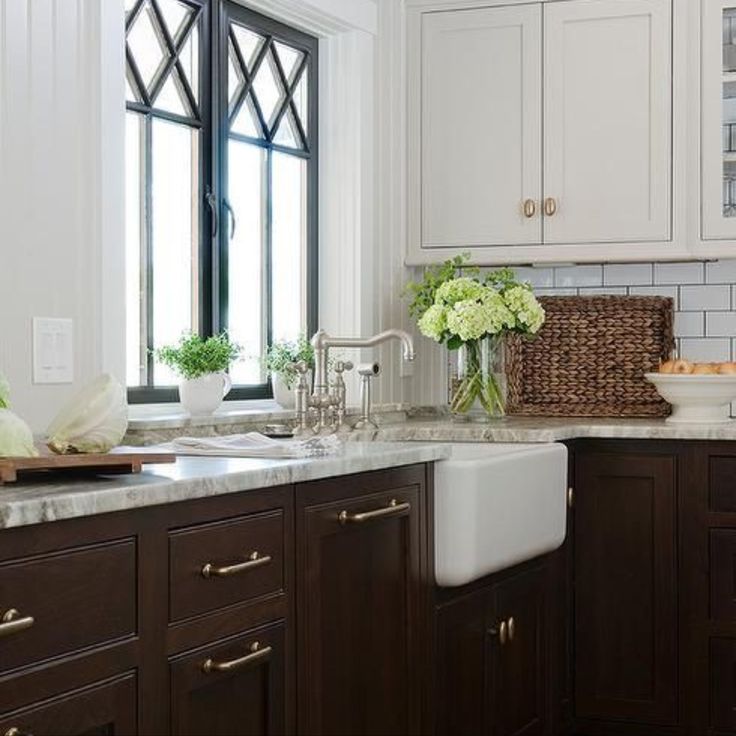 Let the sealer dry completely before lightly sanding with medium-grit sandpaper in the direction of the grain. Wipe the wood again with a clean cloth.
Let the sealer dry completely before lightly sanding with medium-grit sandpaper in the direction of the grain. Wipe the wood again with a clean cloth.
Step 5: Start Staining
Apply stain with a cloth or medium-sized paintbrush and allow it to penetrate into the wood. Coat once for a light stain or apply additional coats for a darker shade. Wipe off excess stain with a clean cloth and allow the piece to dry completely. Lightly sand between coats using fine-grit sandpaper.
If you are using water-based stains, you can minimize raising the grain by moistening the wood with a damp cloth and sanding. Allow the wood to dry completely and sand lightly with fine-grit sandpaper. Repeat as necessary.
When staining cabinets, you usually don't have to worry about the inside of the drawers or cabinets since these parts are rarely visible. But you may want to stain the inside of cabinet doors.
Step 6: Finish It
When you're done staining and the surfaces have dried, make sure you’re happy with the color of the wood.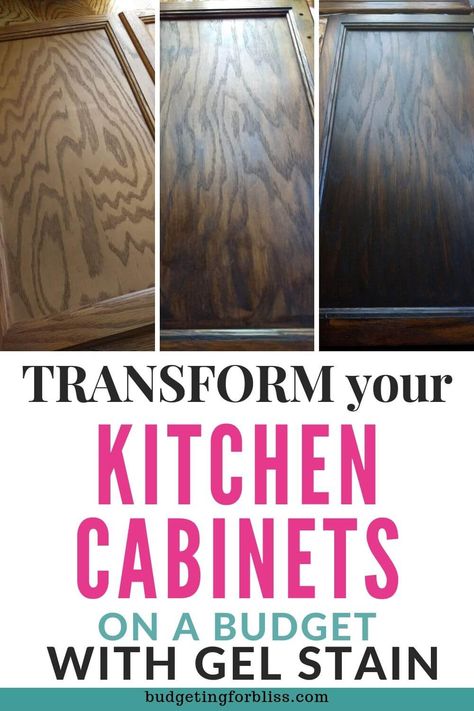 Use a small- or medium-sized paintbrush to apply a light polyurethane sealer or clear varnish to the wood to give it an extra layer of protection and a shine that will last for years. Follow the manufacturer’s instructions for application tips and drying times.
Use a small- or medium-sized paintbrush to apply a light polyurethane sealer or clear varnish to the wood to give it an extra layer of protection and a shine that will last for years. Follow the manufacturer’s instructions for application tips and drying times.
Reinstall the cabinet doors and drawers and their hardware after the stain and finish has dried completely.
Congratulations! With a little work and a few coats of stain, you've got “new” cabinets and you didn't break the bank.
Project Shopping List
Here’s what you’ll need to complete this project successfully.
6 painting steps and instructions
Skip to content
Furniture
Mister
Kitchen cupboards are not always worth replacing, sometimes they need to be painted. Renovation of kitchen furniture is now an extremely fashionable trend.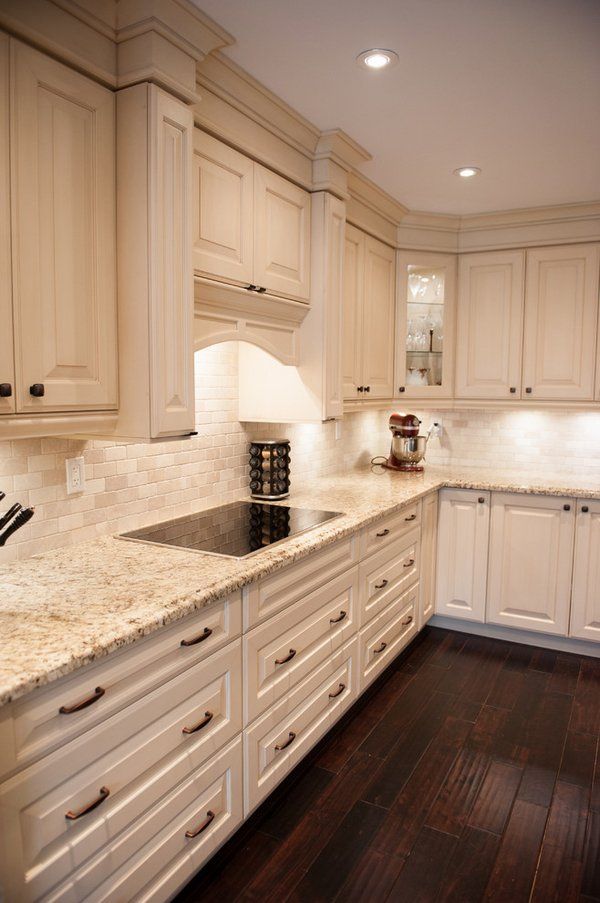 Beautiful facades often have great potential that can be highlighted with the right paint. Before deciding to completely get rid of the old kitchen decor, take a brush or roller. It may turn out that painting furniture white will be the bull's-eye!
Beautiful facades often have great potential that can be highlighted with the right paint. Before deciding to completely get rid of the old kitchen decor, take a brush or roller. It may turn out that painting furniture white will be the bull's-eye!
Contents of the article
Replacing or painting kitchen furniture, what to do?
DIY is one of the fastest growing trends. Repairing old kitchen furniture, or rather painting it, which has already survived its best years, is a positive trend dating back to the good times when do-it-yourself was appreciated and individual appliances were respected. Better to repair than throw away, freshen up instead of replaced, right? Moreover, we will always have time to buy a new one, if there would be, as they say, money. And the easiest and most effective way to give the kitchen a neat look is to paint it with quality paint. Here's how to do it competently, we will discuss in this article step by step, in 6 simple steps.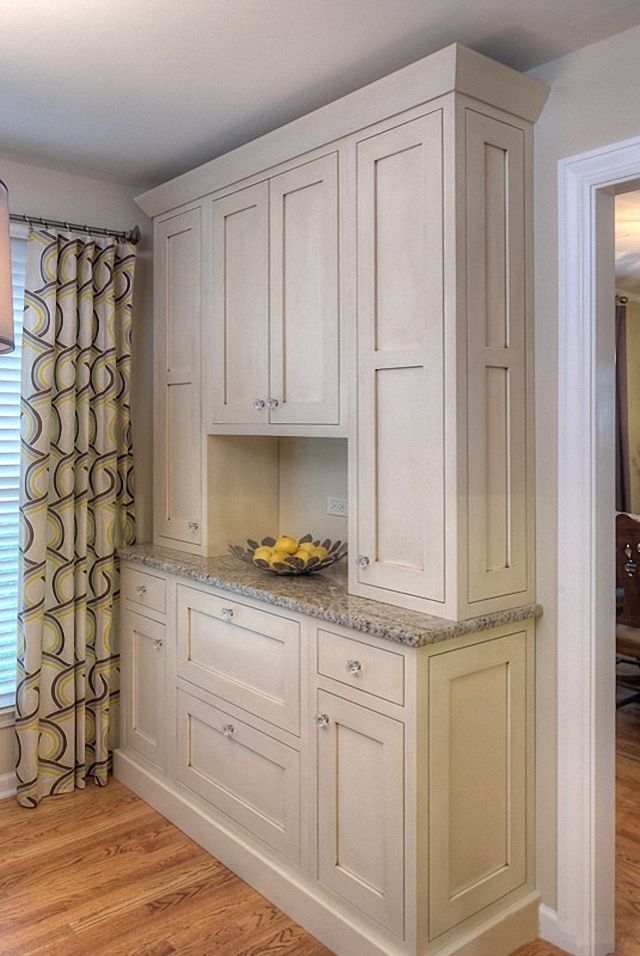
Kitchen furniture wears out the fastest. High intensity of use, exposure to grease, stains, exposure to water vapor and, finally, the risk of damage means that after a few years we can notice more or less serious scratches or abrasions on the fronts of drawers and cabinets. On the other hand, such minor flaws do not necessarily mean that they need to be replaced. Kitchen paint is often a much better (and certainly cheaper!) way to replace it. It is enough to apply several layers, replace the handles or the countertop, to change a lot in the design of the kitchen.
If you decide to repaint the kitchen set and decide what color it will be, be prepared for the fact that you will have to change the textiles on the windows and the upholstery of upholstered furnitureWhat paint to choose for painting kitchen furniture
Of course, our mission has a chance of success if we focus on a quality product. Many people who start their adventure with do-it-yourself furniture repairs - kitchens and other areas - are in doubt about which product is being used.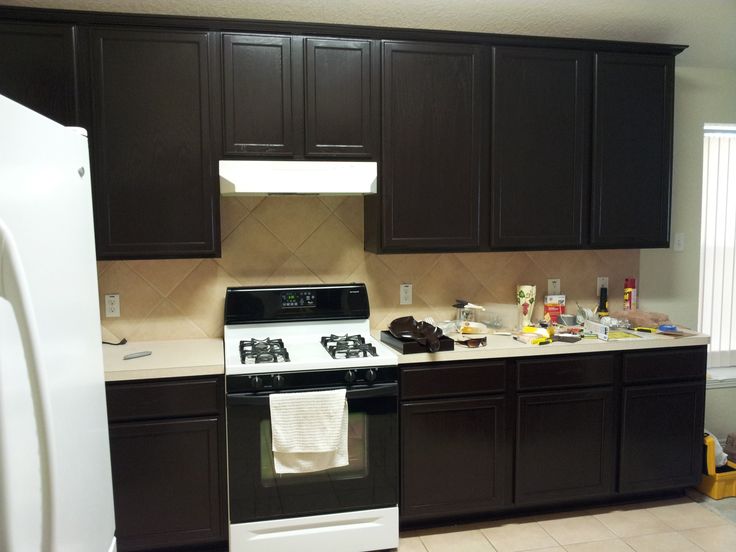 Do I need paint for veneered furniture or is it standard wood furniture paint? There is no single answer.
Do I need paint for veneered furniture or is it standard wood furniture paint? There is no single answer.
The manufacturer's recommendations and the product data sheet, which describes the applications, are of key importance. Usually, painting kitchen furniture made of MDF board, as well as veneered or even wooden furniture, requires us to purchase one product.
These are mainly acrylic paints, universal, resistant to a number of factors, including exposure to solar radiation or cleaning. Manufacturers often produce special paints for painting wooden furniture, which allow you to achieve the perfect visual effect and effectively protect the surface.
Applying enamel with a brush or roller is difficult. For painting kitchen facades with your own hands, it is better to choose auto enamel. It is available in pressurized cans to achieve an even coat without the hassle.Features of kitchen paints
To paint kitchen cabinets well, you need to take into account the nature of the composition, water resistance, degree of coverage, and, of course, color.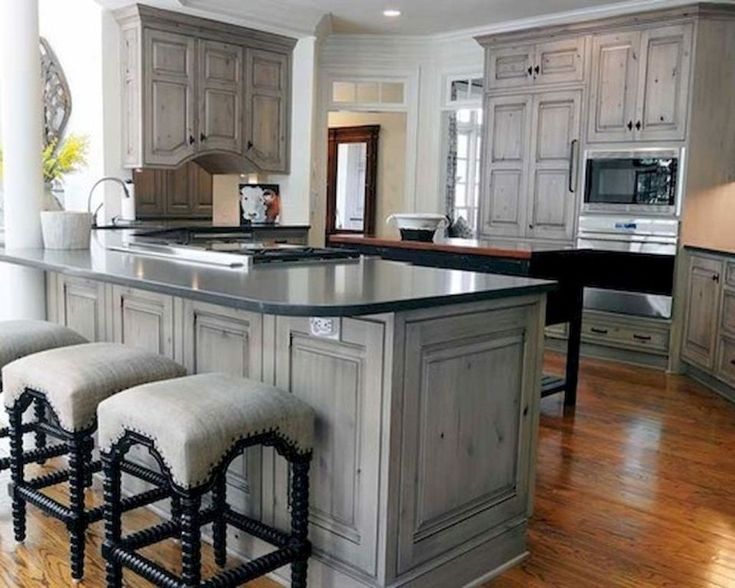 In fact, the choice is not so great:
In fact, the choice is not so great:
- Oily - they are called so because the solvent for them is not aqueous solutions, but oily ones. This option is remarkably resistant to the action of moisture and steam, perfectly tolerates temperature changes. However, the structure of the paint is viscous, it is difficult to apply it. To repaint the facade well - without streaks, bumps and light spots, you need a lot of experience. In addition, oil formulations dry for a long time, and drying is accompanied by a heavy unpleasant odor.
- Acrylic paints. They use water as a solvent, so they are completely safe and hygienic. For the kitchen, it is necessary to choose waterproof acrylic compositions, otherwise the painted set will quickly lose its appearance. The composition lays down very easily and evenly, so painting the facade of the kitchen with your own hands is quite simple. In fact, waterproof paint is also washed off with each wash.
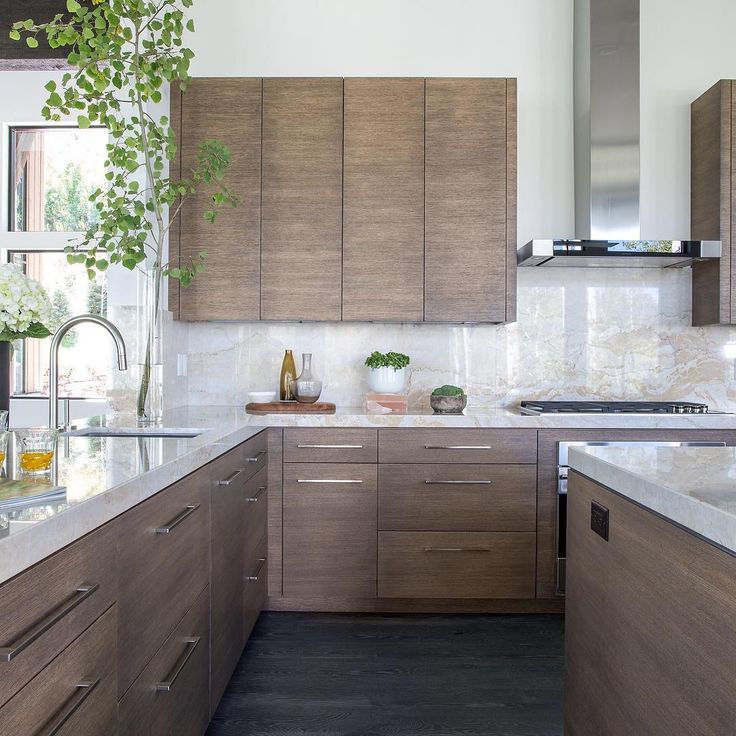 However, this does not happen so quickly: visible abrasion is observed no earlier than after 500 cleanings
However, this does not happen so quickly: visible abrasion is observed no earlier than after 500 cleanings - Alkyd enamels - paints based on organic solvents. For the kitchen, this option is considered the best, as it has a remarkable hiding power; safe, dries quickly and easily and does not wash off. The coloring layer is resistant to steam and condensate, does not absorb dyes and soot and is insensitive to temperature. All its advantages can be observed in finished kitchens made of MDF with enamel coating.
- Repair paints (e.g. repair paint V33) . This is a special range of products for the repair of kitchen furniture and other surfaces (including ceramic tiles or even household appliances - depending on the type). They are easy to apply and provide a durable and very attractive surface.
Aerosol paint
The most convenient option for painting the facade of the kitchen at home is aerosol paint in cans, for example, acrylic or car enamel due to its heat and moisture resistance. Acrylic spray paint is durable, damage resistant and available in many shades.
Acrylic spray paint is durable, damage resistant and available in many shades.
Aerosol paint in cans is used in a variety of areas, including it is applicable in household and repair work for painting furniture. Low cost, ease of spraying and the ability to create a perfectly even coating make you choose this particular paint and varnish material and make it indispensable for repair and decoration.
Of course, spray painting will be more accurate. Here we must remember that during operation, part of the material will be sprayed to the sides. Therefore, it is necessary to cover everything around with a film so that the paint does not get. For a more saturated color, you can paint again after the first layer has completely dried.
A perfectly glossy finish can be achieved by applying several coats of varnish with an intermediate polish after each coat driesImportant! Before starting work, we protect all surfaces that we are not going to repair and paint, such as countertops, as well as walls and floors, it is advisable to cover them with masking film and stick with masking tape
Video - How to update an old kitchen
Choosing a paint color
You can choose one color or several colors for painting a kitchen set, which is becoming very popular , it is important that the color scheme is in harmony with the overall interior. It will be easy for those who have taste, but for beginners in this business it will be a little difficult.
Consider the following options:
- Neutral solution . This includes all varieties of beige, as well as brown, black, gray and white. Combining these colors, it is quite difficult to make a mistake, you just need to carefully combine dark tones.
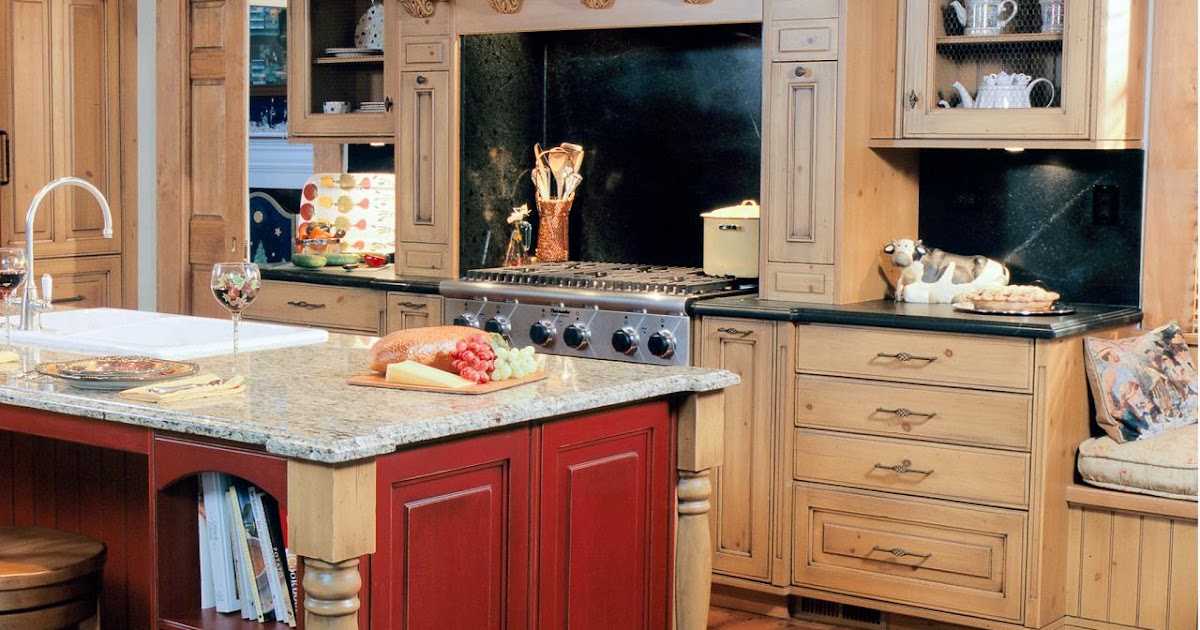 The most common option: the upper cabinets are light in color, the lower cabinets are dark. This combination is more suitable for classic interiors.
The most common option: the upper cabinets are light in color, the lower cabinets are dark. This combination is more suitable for classic interiors. - It is important to remember that it is better not to combine only dark or only light colors. Don't forget about bright colors. So, black can be combined with red, light green, mint, pink, beige, white with blue, lilac, blue, beige with red, lilac with cappuccino color, burgundy with cream, white, wood color, etc. Two bright or two neutral colors is an interesting option, here you should rely on your taste. The theme of vegetables and fruits will look no less interesting.
- If you want to have an original interior, combine contrasting colors - yellow with lilac, orange with blue, blue with red or pink. For a more relaxed atmosphere - orange with red or yellow, green with yellow or blue with green.
- To date, the use of several colors at the same time has become widespread.
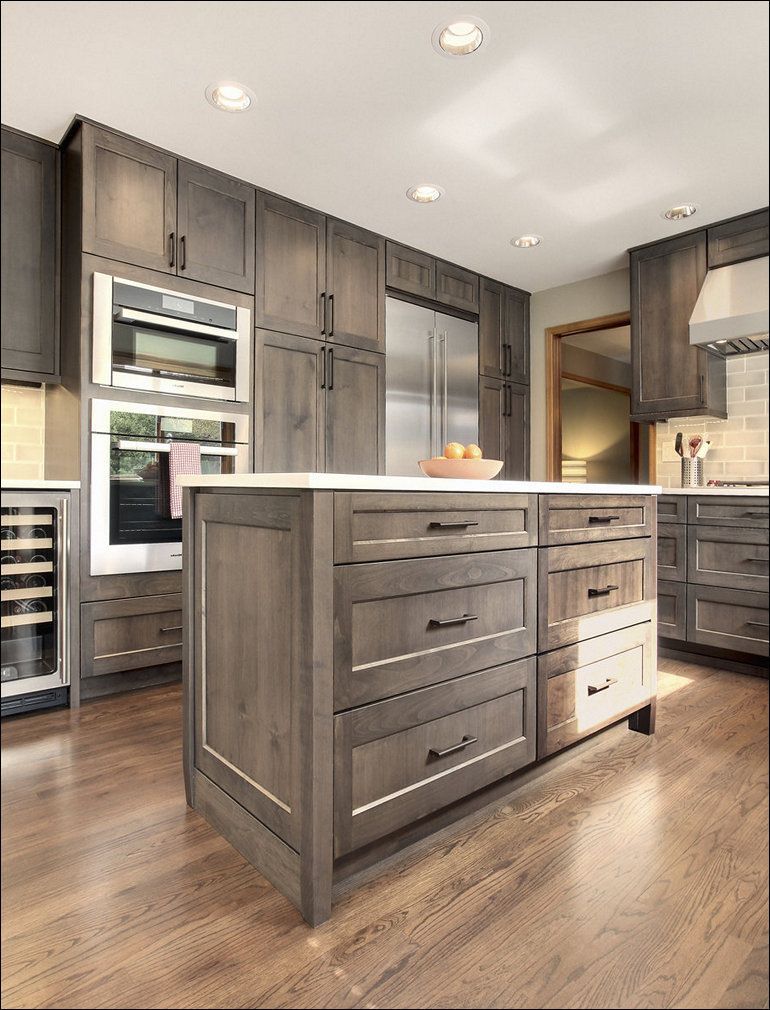 For example, two calm shades can be “diluted” with a colorful detail. You can use a different color for each individual facade - your kitchen will be in retro style.
For example, two calm shades can be “diluted” with a colorful detail. You can use a different color for each individual facade - your kitchen will be in retro style.
See examples in the photo below:
Read also:
Color solutions for the interior of the kitchen: Description and best examples of design
How to color the kitchen settings: Repair in 6 stages
Painting kitchen cabinets is often a much better solution than buying a low quality, inexpensive new kit, especially if the furniture is still functional and easy to use. A universal, well-known and applicable principle in many areas, which can be applied to the repair of kitchen furniture: the most important thing is preparation. The final effect will depend on how accurately we prepare the equipment for further work.
1.
 Defect detection and minor repairs
Defect detection and minor repairs The first thing to consider is the furniture. We will check the condition of cases, facades, skirting boards, shelves, cabinets and drawers, we will check how serious the damage, scratches and cracks are. It is possible that they can be supplemented with a special mass (for example, with wood defects) or sanded with sandpaper. By the way, let's think about adjusting and profiling (and in some cases replacing) fittings, hinges and guides.
2. Preparation of surfaces for painting: matting
Of course, only a change in color will allow us to make a diametrical metamorphosis of kitchen furniture. To achieve a beautiful (and durable!) effect, let's first prepare the furniture for painting. To do this, we will disassemble the handles and handles, which will allow us to accurately perform the work. It will not always be necessary to disassemble cabinet doors. We can do this to facilitate repair work.
It turns out that the repair of kitchen furniture from different materials is basically very similar.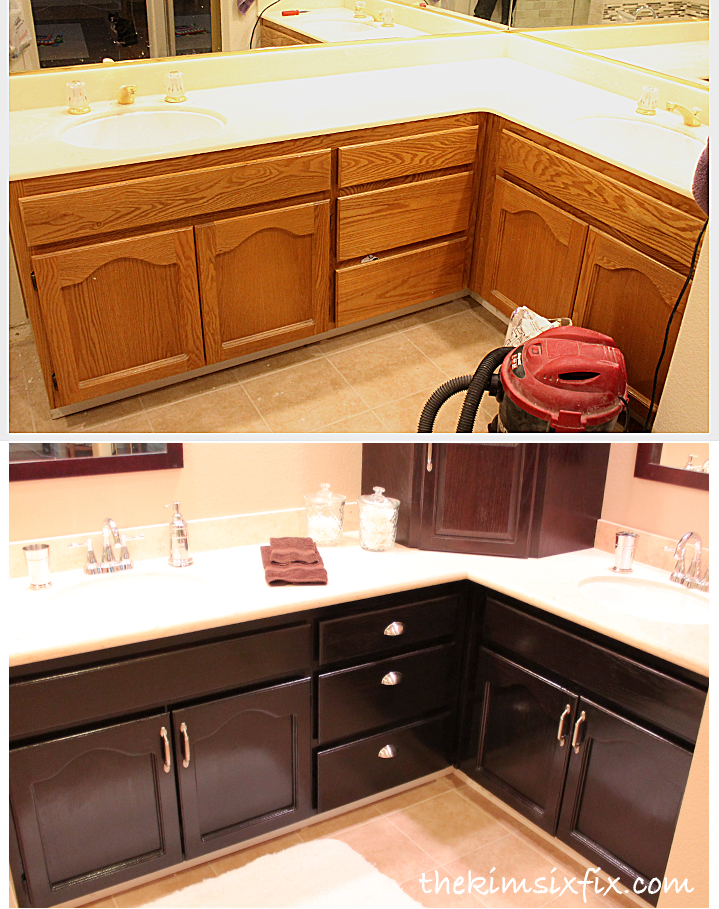 The basis here is matting the surface, that is, rubbing with sandpaper and at the same time grinding all the bumps and reducing scratches. Why is it so important? If the surface is not rough, the new paintwork will not provide adequate adhesion. As a result, after a while, it will begin to flake off.
The basis here is matting the surface, that is, rubbing with sandpaper and at the same time grinding all the bumps and reducing scratches. Why is it so important? If the surface is not rough, the new paintwork will not provide adequate adhesion. As a result, after a while, it will begin to flake off.
First we mat the furniture with coarse-grained sandpaper, then we smooth the surface and get rid of burrs with fine-grained paper. Such procedures will ensure perfect adhesion of the paint to the furniture.
A sander will greatly facilitate manual workWant to achieve the most even and durable finish? Then it is worth sanding the surfaces after each coat of primer, paint and varnish (except for top coats)
You can also use nail polish removers. To remove the PVC film, you will need a building hair dryer. With it, it is necessary to heat the film from the front side and carefully remove it from the facade. Please note that during the work a rather pungent odor will be released, so it is advisable to choose a non-residential premises for this procedure.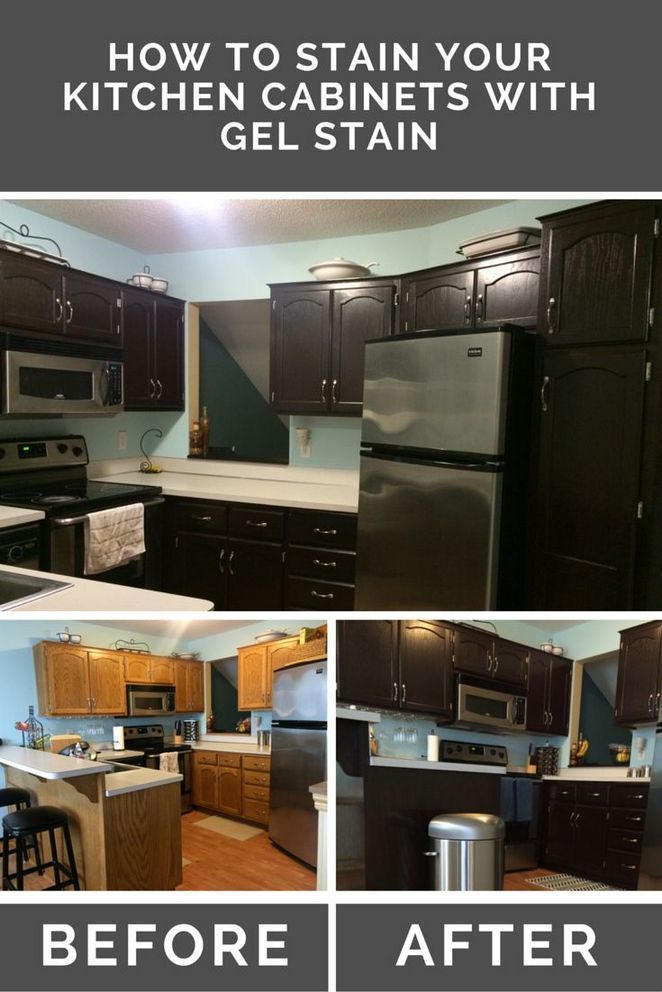
In addition, we prepare both veneered and wooden furniture for further work. In the case of veneers, first check their condition. If they stick out and start to come off, let's tear them off the facades. We remove all chipped paint and its peeling fragments from the surface of wooden furniture - if the furniture was previously painted.
Finally, remove the dust generated during operation with a vacuum cleaner, and then wipe the furniture with a damp cloth and detergent. Let's try to remove the grease that could affect the adhesion of the paint layer to the furniture3. Primer
The primer for plastic and wood differs in composition, so before you update the facade of the kitchen, consult with the sales assistant in choosing the right product. The quality of the primer determines how well the painting will happen. The substance must be applied in 2 thin layers.
Before applying the compound, arrange the parts so that you are comfortable.
After each application, it is recommended to wait until completely dry, and then treat the primed surfaces with sandpaper to even out the coating and increase paint adhesion.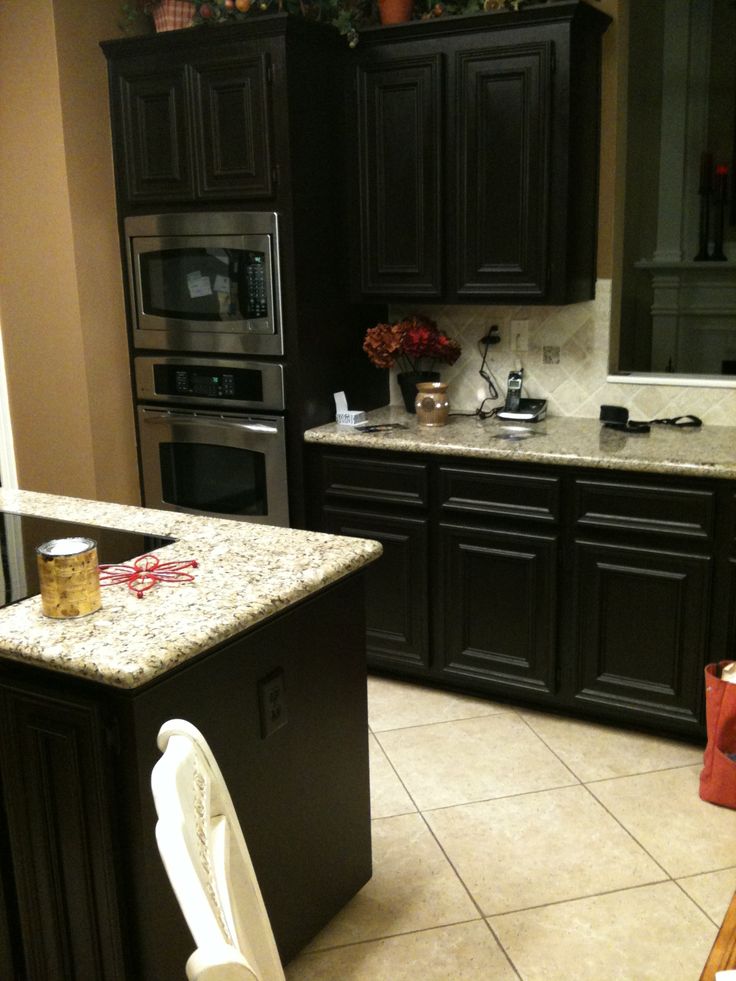 After that, leave the product for a day.
After that, leave the product for a day.
4. The process of painting the set
We start painting veneered, plank or wooden furniture as soon as it is completely dry. We will need a small brush, a large brush, a narrow and wide roller - the size of the tools must be adapted to the specifics, furniture design, length and type of bristles and paint.
In the product data sheet, because each paint may have different requirements. The manufacturer's recommendations should also be followed when it comes to painting conditions, the number of coats or the time interval between one coat and another.
In order to paint the facade of the kitchen with high quality, to avoid streaks and any other marks, it is recommended not to take too much paint on a brush and roller, to drive over the surface with smooth, even movements We start painting kitchen appliances from their hard-to-reach places, corners, corners and details. For this, a small brush is useful, thanks to which we can accurately cover the cavities or milling with paint.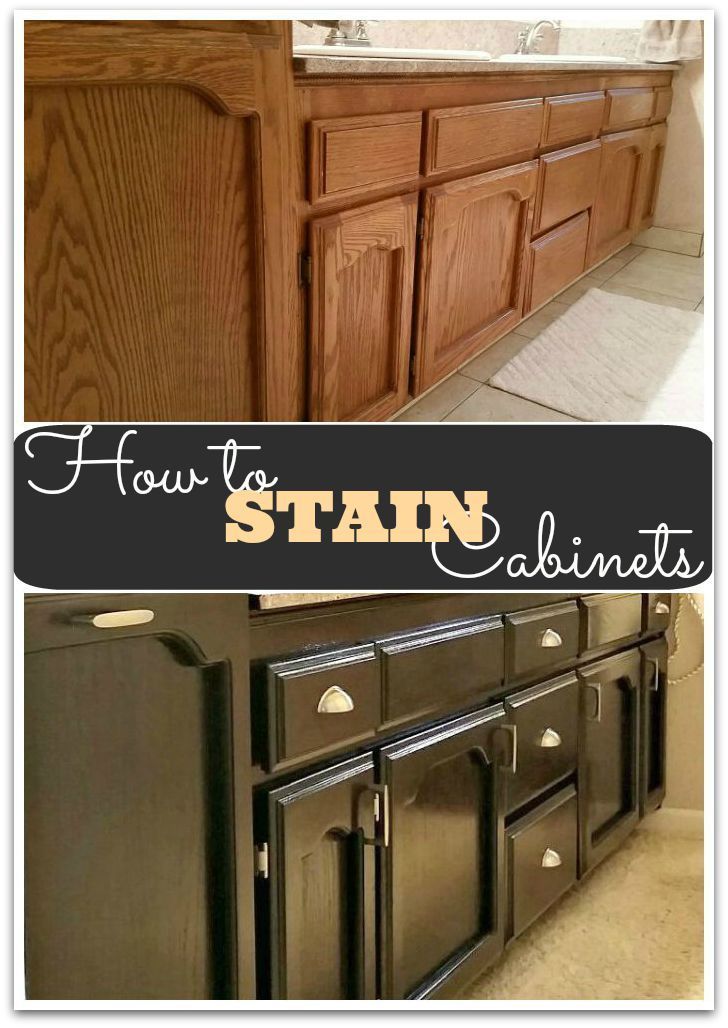
Then move on to painting larger surfaces using a larger brush or roller. We paint fragment by fragment, first with a brush, and then with a roller, covering the next parts of the furniture with paint.
Tip! The brush for painting the facade of the kitchen at home should be new. With it, it is easy to paint recesses, joints, corners, small details, in general, all those hard-to-reach places where it will be difficult or impossible to reach with a roller. For even application of paint, purchase a roller on foam rubber, and a special paint tray will make the work more convenient and will not absorb a lot of paint material into a brush or roller
5. Replacing the decor of the front of the kitchen set or getting rid of unnecessary elements
A brilliant trick that allows you to visually refresh the look of old kitchen furniture is to remove the front trim. In addition, think about replacing the legs (those covered with an overlay usually do not look very designer).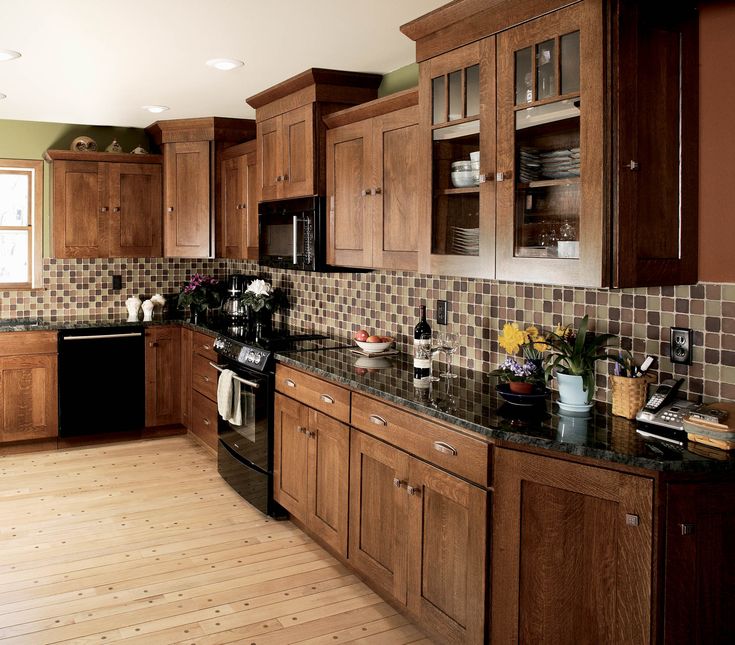 These two simple steps will allow you to optically shift the center of gravity: the floor will become more visible, and the body will become lighter, thinner and less massive.
These two simple steps will allow you to optically shift the center of gravity: the floor will become more visible, and the body will become lighter, thinner and less massive.
Decoupage cards or napkins with a pattern are used here, you can take various pictures cut out from magazines, print some picture on a printer. We place the images on the facades, glue them on PVA, leave them to dry completely. At the end, we cover with a transparent varnish in several layers.
Even an inexperienced painter can decorate boring facades of a headset or hide local damages (scratches, chips, stains, etc.) with decoupage drawingsAdditional decorative processing
Additional materials help create unusual effects on the surface, no matter the color scheme:
- Stencil or tulle allow you to create lace designs.
- Gleezal will be needed to create embossed patterns.
- Masking tape and stencil are used when the shades themselves when finishing are two or more.
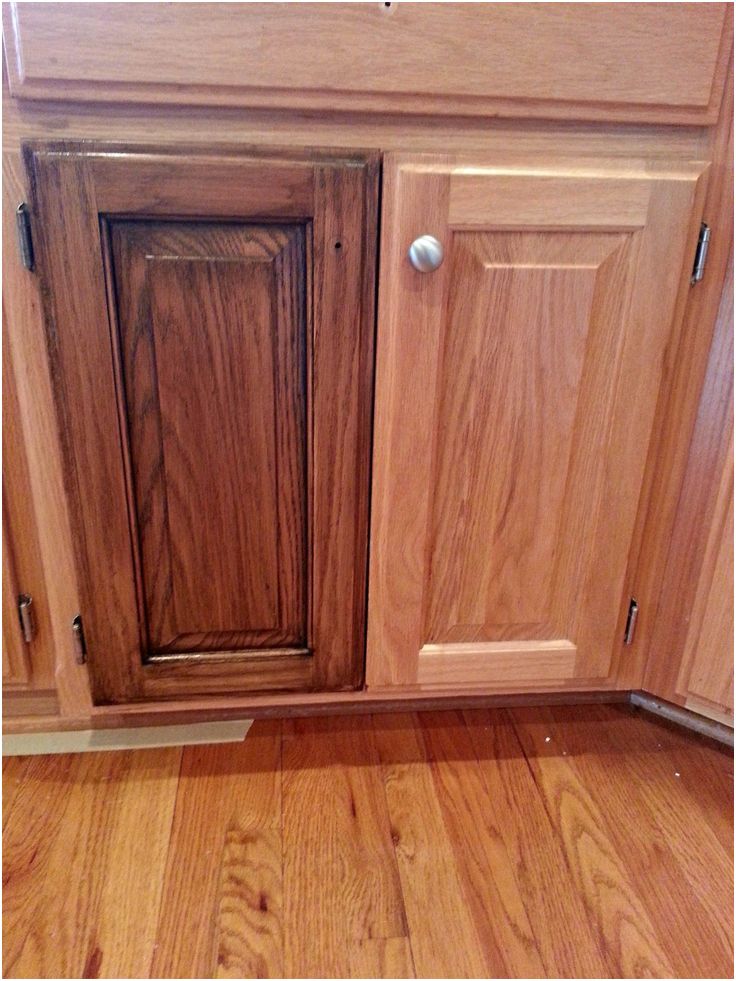
- A thin brush is more convenient to display gold and silver patterns. This should be done after the varnish layer dries.
- With the help of an airbrush, artistic painting is performed according to sketches.
- Cling wrap is a technique used to create marble surfaces. At such moments, the products simply glisten, while drawing veins and highlighting the relief texture.
- With a simple comb, it is easy to draw a relief graceful structure.
- Unique rustic facades are created by applying a rough canvas or mesh to the surface.
- Embossing - this technology is applicable with the help of pimpled film. The surface will look like alligator skin when painted.
The main thing is a competent approach, and simple painting will give new life to an old set
Painting kitchen furniture with your own hands is a complex process, but it involves the use of a creative approach. You will have to spend a lot of time, but the result will pleasantly surprise not only the owners, but also the guests who will visit you.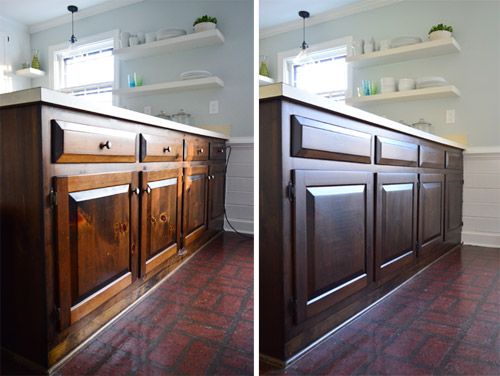 There are no restrictions on the options used, everyone finds the closest option. It remains only to select the appropriate materials.
There are no restrictions on the options used, everyone finds the closest option. It remains only to select the appropriate materials.
6. Replacement of accessories
Details, little things, small elements can make a significant, even diametrical change in the appearance of kitchen furniture. When planning a comprehensive kitchen renovation, do not forget about replacing handles. Thanks to this, it is much easier to achieve a given interior style. There are rustic and modern, industrial and classic pens in every store, just pick the ones you like best. Believe me, if the accessories are not rare and there is nothing valuable in their design, you should not bother with their repair.
Read also:
How to choose high-quality accessories for kitchen furniture
Video-painting of kitchen facades MDF
photos of example of furniture
The following are several photo dodging kitchens and after painting. painting. Pay attention to how updated and bright the kitchen furniture has become, and how the interior of the kitchen has changed.
To summarize
How to repair and paint kitchen furniture, so that the result does not disappoint? First evaluate the range of damage and work required, then select the best paint product. Thanks to high-quality paint for painting furniture, we do not have to think about time-consuming, thorough repair and replacement of equipment. Why replace when you can extend life? All you have to do is change the color, tone or shade, plus a thoughtful selection of accessories to create your dream kitchen with interior design magazine furniture.
Why replace when you can extend life? All you have to do is change the color, tone or shade, plus a thoughtful selection of accessories to create your dream kitchen with interior design magazine furniture.
As you can see, painting a kitchen is not only a renovation, but also creativity. Now that you know how and how to paint the facade of the kitchen with your own hands, you can safely get to work. In the renovated premises it will be not only pleasant to be, but also to cook, wash dishes, meet and chat.
Video - Master class: how to paint furniture in the kitchen
- ← Your kitchen: 100+ photos of real interiors and examples of kitchen design
- Porcelain tableware for serving the dining table: sophistication and style →
TOP-5 articles
Buy a grinding machine with delivery in Krasnodar wholesale and retail from the PROinstrument online storeWe paint the kitchen set with our own hands: a step-by-step algorithm
The kitchen is one of the most significant places in the house. In the evening, coming home from work or school, the whole family sits down at the table, has dinner, over a cup of tea, telling how the day went, what ideas you want to bring to life. That is why the situation in the kitchen affects our emotions, sensations. The mood immediately deteriorates, you don’t even want to enter the room if the furniture doesn’t look right. Therefore, it is necessary to bring the interior items in order. Even the simplest way - painting a kitchen set - will significantly change the look.
The kitchen is one of the most important places in the house.
Content
- 1 Advantages of painting with your own hands
- 2 Selection of color scheme
- 3 Selection of paint
- 4 necessary materials
- 5 necessary tools
- 6 step -by -step painting algorithm wood
- 9 VIDEO: Kitchen renovation. Part 2.
- 10 50 photo ideas how to paint a kitchen set
Benefits of DIY painting
To transform kitchen furniture, you don't need a big investment, just buy paint. Painting a headset is a simple matter. If you have never done this before, then you can easily cope with this work.
Painting a headset is a simple matter. If you have never done this before, then you can easily cope with this work.
The situation in the kitchen affects our emotions and feelings.
This type of furniture renovation is the most common option. There is no need to be a specialist and have a long work experience in this field. The method is very economical, but the result will exceed all expectations. Coloring will take a fairly short time, without much diligence.
Even the simplest way - painting a kitchen set - will significantly change the look.
Choosing a color scheme
So, if you decide to repaint the kitchen set and decide what color it will be, be prepared for the fact that you will have to change the textiles on the windows and the upholstery of upholstered furniture. You can choose one color or several, which is becoming very popular, it is important that the color scheme is in harmony with the overall interior. It will be easy for those who have taste, but for beginners in this business it will be a little difficult.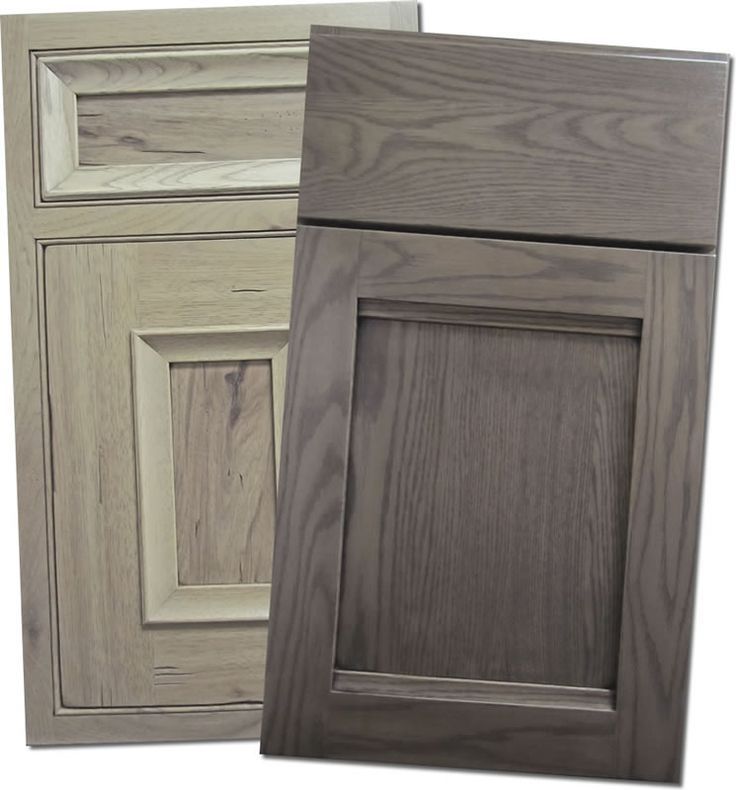
Neutral solution. This includes all varieties of beige, as well as brown, black, gray and white. Combining these colors, it is quite difficult to make a mistake, you just need to carefully combine dark tones. The most common option: the upper cabinets are light in color, the lower cabinets are dark. This combination is more suitable for classic interiors.
It is important to remember that it is better not to combine only dark or only light colors. Don't forget about bright colors. So, black can be combined with red, light green, mint, pink, beige, white with blue, lilac, blue, beige with red, lilac with cappuccino color, burgundy with cream, white, wood color, etc. Two bright or two neutral colors is an interesting option, here you should rely on your taste. The theme of vegetables and fruits will look no less interesting.
If you want to have an original interior, combine contrasting colors - yellow with lilac, orange with blue, blue with red or pink. For a more relaxed atmosphere - orange with red or yellow, green with yellow or blue with green.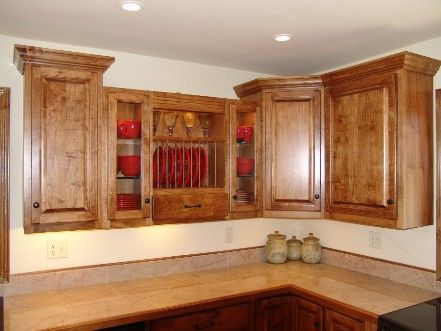
To date, the use of several colors at the same time has become widespread. For example, a colorful detail can “dilute” two calm shades. You can use a different color for each individual facade - your kitchen will be in retro style. The main thing is a competent approach, and simple coloring will give new life to an old headset.
You don't need to invest a lot to transform your kitchen furniture, you just need to buy some paint.
Paint selection
Today you can see a huge range of paints in stores. But not everyone is suitable for kitchen facades. Do not use a water-based emulsion and oil paint - they will lie unevenly and leak. Acrylic paint is also not recommended - it will not tolerate moisture and various cleaning agents.
After all the work done, we attach fittings, insert glass, hang cabinets.
The best option is aerosol alkyd paint in cans or car enamel. This material is applied evenly, without smudges, its properties are reliable, resistant, it easily tolerates humidity and temperature changes, there is a variety of colors.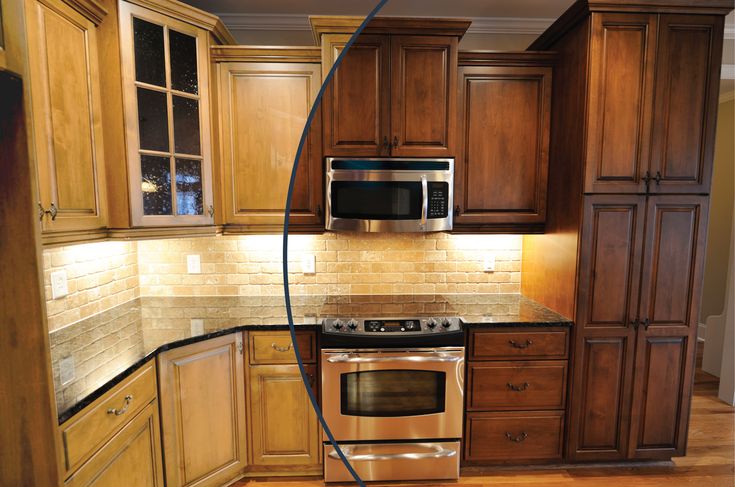
Required materials
From the materials we need:
- spray paint,
- sandpaper,
- wood primer,
- solvent,
- putty,
- gloves,
- goggles,
- masking tape,
- decoration glisal,
- fittings (if you decide to change the old one),
- oilcloth or film, so as not to drip onto the floor.
Painting a set is easy.
Tools needed
Tools needed:
- roller or brush,
- grinder,
- hair dryer,
- screwdriver or screwdrivers,
- spatula,
- paint tray.
This type of furniture renovation is the most common option.
Step-by-step painting algorithm
How to paint a kitchen set? First you need to remove the doors from the cabinets, all fittings, stained glass or simple, mirrored rates. If there is a PVC film on the surface, remove it with a building hair dryer. We approach this stage of work very carefully so that not the slightest piece remains.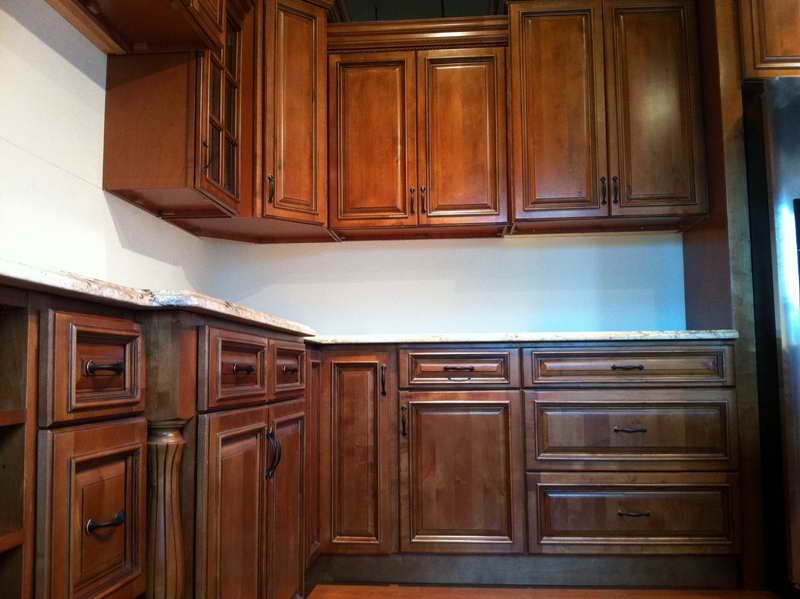 Then we clean it from dirt and dust. Now you need to sand the surface using fine sandpaper or a grinder. The plane must be smooth, carefully processed, without minor defects. In the same way, we remove the old paint. In addition, you can use special liquids for removing paint and varnish. We wipe the surface again, remove the dust, it is better to use a brush so that the dust does not clog into the cracks.
Then we clean it from dirt and dust. Now you need to sand the surface using fine sandpaper or a grinder. The plane must be smooth, carefully processed, without minor defects. In the same way, we remove the old paint. In addition, you can use special liquids for removing paint and varnish. We wipe the surface again, remove the dust, it is better to use a brush so that the dust does not clog into the cracks.
For perfect coloring, apply paint by moving the brush or roller in one direction, no need to rush.
The next step is to treat the surface with a degreaser. We let it dry, prime the plane, applying the mortar on the tree. Leave to dry completely, ideally - for 24 hours. To completely remove all irregularities, we apply putty. After drying, you need to process with sandpaper again. After the surface is completely brought in order, we proceed to painting.
It is necessary to cover everything around with a film so that the paint does not get in.
For perfect coloring, apply paint by moving the brush or roller in one direction, no need to rush. If you are using a series of tones, seal the borders with masking tape. Of course, spray painting will be more accurate. Here we must remember that during operation, part of the material will be sprayed to the sides. Therefore, it is necessary to cover everything around with a film so that the paint does not get. For a more saturated color, you can paint again after the first layer has completely dried.
If you are using a series of tones, seal the borders with masking tape. Of course, spray painting will be more accurate. Here we must remember that during operation, part of the material will be sprayed to the sides. Therefore, it is necessary to cover everything around with a film so that the paint does not get. For a more saturated color, you can paint again after the first layer has completely dried.
For a more intense color, you can paint again after the first layer has completely dried.
After all the work done, we attach fittings, insert glass, hang cabinets. That's how easy and simple it turned out to be the original kitchen set, which we reconstructed on our own.
Coloring will take a fairly short time without much diligence.
The final stage - decorating
Many people want their kitchen to be unique and comfortable. Not everyone has the opportunity to change the headset to a new one. It is best to update the furniture that is unpleasant to the eye with the help of decoration.
You can choose any method, in addition to restoring the set, you can update the dining area by replacing the upholstery on chairs, stools or by sewing covers on them.
In addition to painting, facades can be tidied up with the help of self-adhesive film, its choice is very rich - a variety of colors, various patterns imitating wood. The material is applied to the treated surface and leveled with a special spatula. If bubbles appear during operation, they are pierced and pressed to the plane. If the film is pasted crookedly, with “wrinkles”, remove it and glue another piece.
To date, the use of several colors at the same time has become widespread.
If you don't want film, use photo wallpaper. The plane is pre-processed - polished, primed. After complete drying, glue the photo wallpaper. Then varnished to protect the surface.
You can use a different color for each individual facade - your kitchen will be in retro style.
If you want an original kitchen set, use decoupage. Here decoupage cards or napkins with a pattern are used, you can take various pictures cut out from magazines, print some pattern on a printer. We place the images on the facades, glue them on PVA, leave them to dry completely. At the end, we cover with a transparent varnish in several layers.
Here decoupage cards or napkins with a pattern are used, you can take various pictures cut out from magazines, print some pattern on a printer. We place the images on the facades, glue them on PVA, leave them to dry completely. At the end, we cover with a transparent varnish in several layers.
The main thing is a competent approach, and simple coloring will give new life to an old headset.
Variety can be added by sticking mosaics, tiles or decorative moldings. Details of the required length are glued to the surface, forming a frame.
The best option is aerosol alkyd paint in cans or car enamel.
You can choose any method, in addition to restoring the set, you can update the dining area by replacing the upholstery on chairs, stools or by sewing covers on them. You can also apply an image to the surface of the table using the decoupage style.
You can choose one color or several, which is becoming very popular, it is important that the color scheme is in harmony with the overall interior.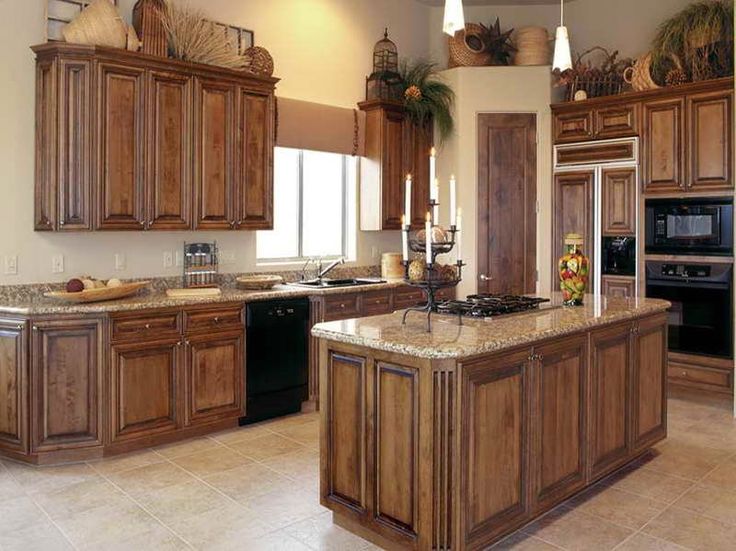
How to age a tree
This way of working with wood is very common. Designers use it in the restoration of furniture, in interior planning. You can age a tree on your own, and your unsightly furniture will look completely different, even more advantageous than factory furniture. How to age a tree at home? Here are some methods that are simple, but highly effective.
Pieces of the required length are glued to the surface to form a frame.
A special way of aging is brushing. Here, with the help of a metal brush, soft fibers are removed from the plane. The brush should move exactly along the line of the fibers. The pressure is applied evenly. Thus, a pattern is obtained, the texture of which can be multiplied by tinting. The next step is to sand the surface. At the end of the work, we remove dust and sawdust. Now we will tint using the Belinka tool of a dark shade. We apply tinting with a brush or roller. After a few minutes, very carefully remove the outer layer of paint with a sponge, thus showing the pattern of the tree.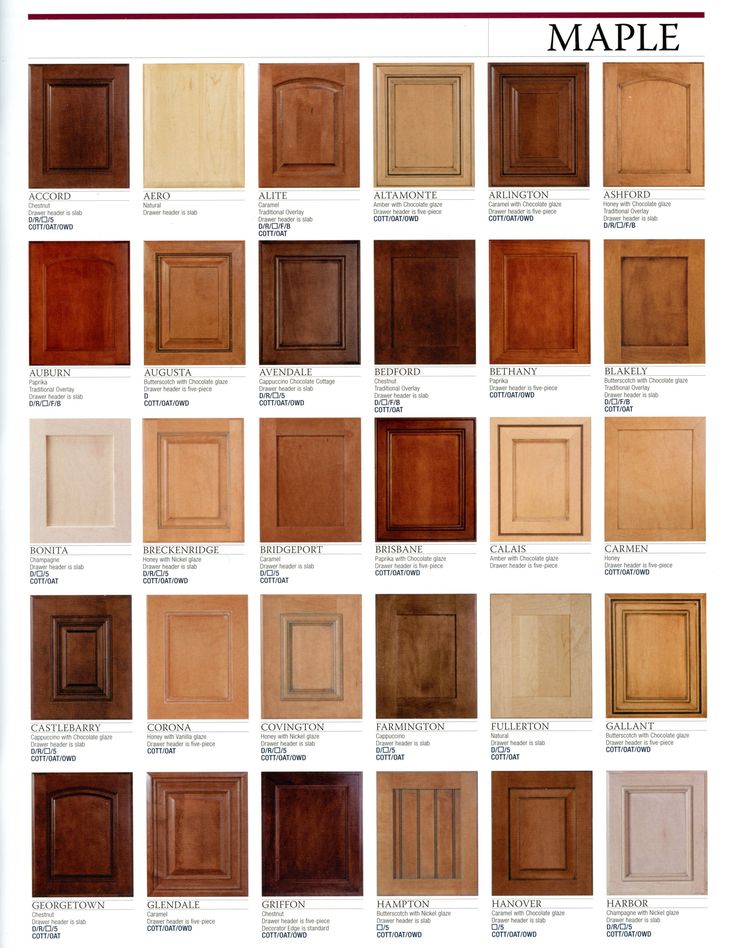 Let it dry completely, apply a clear varnish.
Let it dry completely, apply a clear varnish.
If you decide to repaint the kitchen set and decide what color it will be, be prepared for the fact that you will have to change the textiles on the windows and the upholstery of upholstered furniture.
Large parts of the interior, such as ceiling beams, are decorated with this method of aging and further painting.
1. Multi coat .
Furniture is restored in this way, resulting in a wonderful effect. Before starting work, the tree must be scratched, chipped, indented, worn, even wormholes are applied. This will require certain tools. In order for the result to be obvious, to look authentic, it must be done, but in moderation. Then we take a dark-colored Pinotex tinting agent, apply a layer to the surface. Let dry and polish with sandpaper.
Variety can be added by sticking mosaics, tiles or decorative moldings.
Apply a second layer of white translucent Belinka, but in such a way that the dark base is visible. We leave to dry, then we take a metal brush and, moving along the fibers, we form a texture pattern. We dilute the white glaze in half with a solvent and apply it again to the surface.
We leave to dry, then we take a metal brush and, moving along the fibers, we form a texture pattern. We dilute the white glaze in half with a solvent and apply it again to the surface.
It will be easy for those who have taste, but for beginners in this business it will be a little difficult.
2. Open fire aging.
A gas burner is used here, the wood is treated with fire, the wood becomes saturated in color, then it is passed with sandpaper, developing the pattern. At the end, a protective varnish is applied.
Combining colors, it is quite difficult to make a mistake, you just need to carefully combine dark tones.
3. Using vinegar and steel wool.
This method is based on the chemical reaction of these substances and how the color and surface of the wood subsequently changes. The result is excellent.
The most common variant: the upper cabinets are light in color, the lower cabinets are dark.
